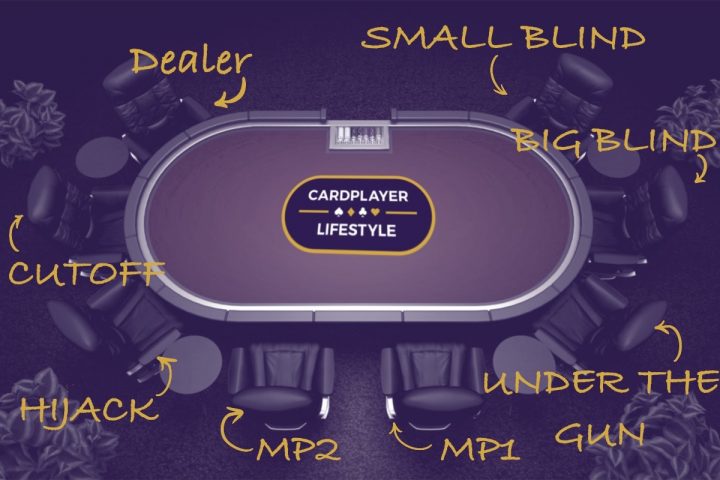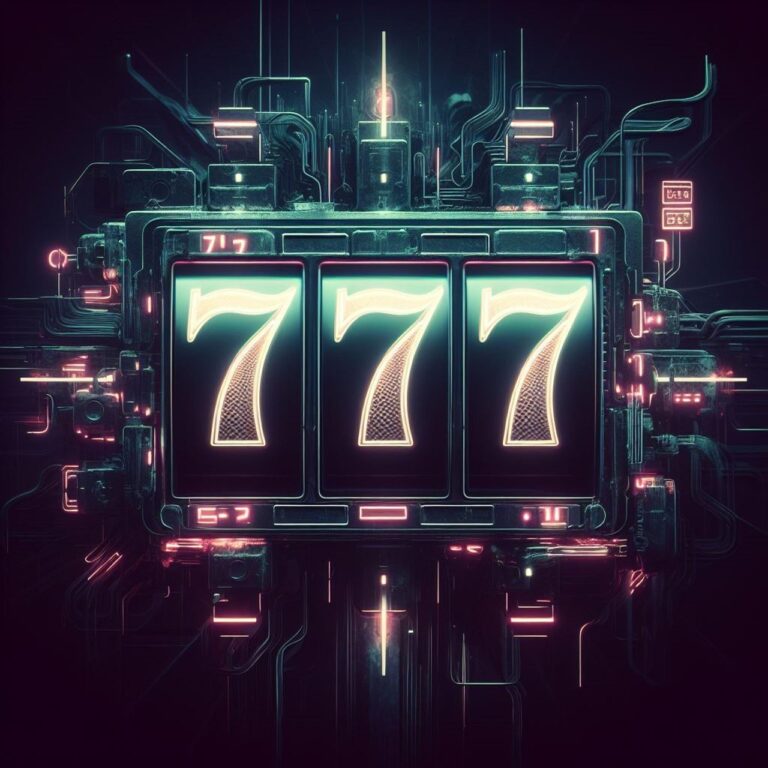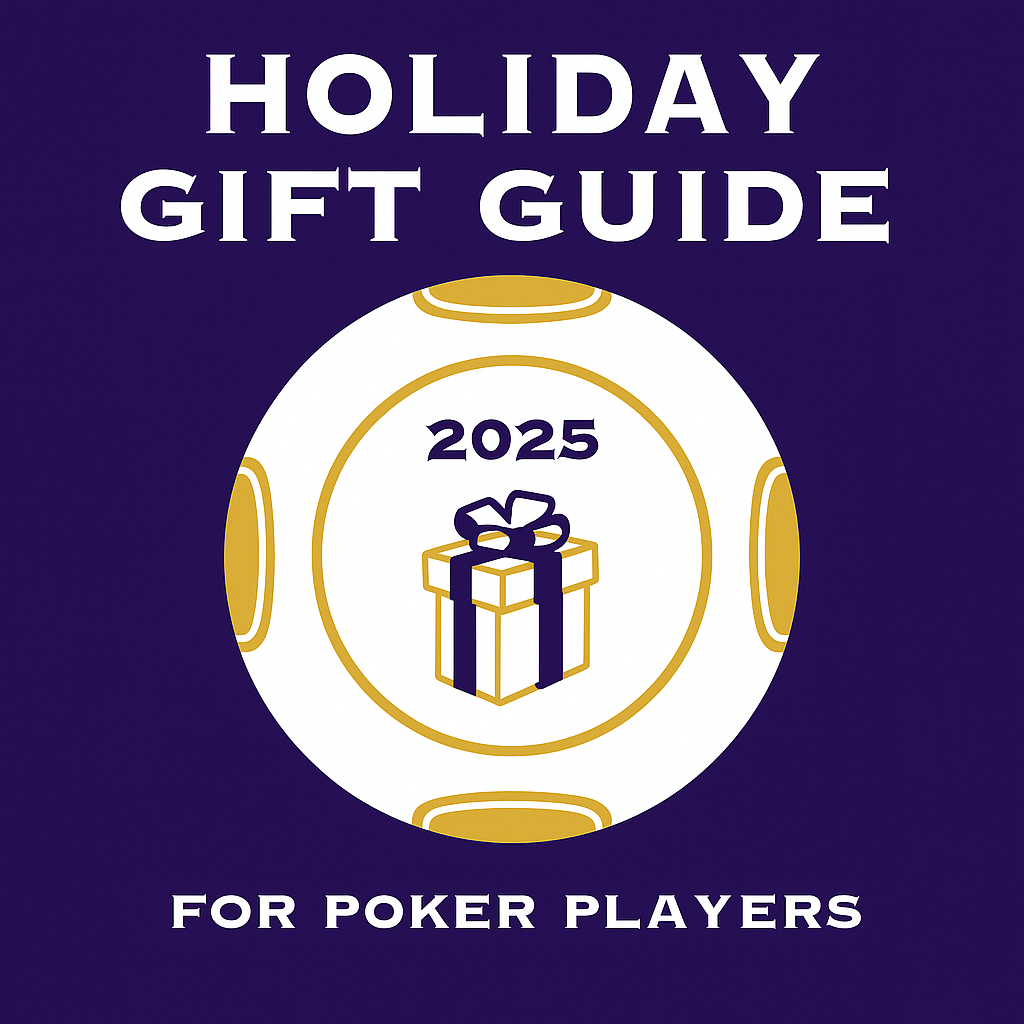Understanding poker seat position is a necessary skill that can go a long way to improving your overall profit-based performance at the tables – both live and online.
Seat positions can also have a massive influence on whether you or your opponents check, call, raise, or fold.
In this article, we’ll explore poker seat positions and provide examples of how you can use this knowledge to gain an edge when playing poker.

Poker Seat Position
To give you the most comprehensive example of poker seat positions, we’ll use a (somewhat uncommon) 10-handed hypothetical scenario of a Texas Hold’em poker game.
Let’s say we’re playing a $1/$2 No Limit Texas Hold’em cash game at a casino, and the action is 10-handed.
Before any hole cards are dealt, the Small Blind will be required to contribute $1 to the pot, while the Big Blind will have to place $2 into the pot. The hand will then begin, and each player will receive two “face-down” hole cards.
Now we are at the preflop stage, and the action will commence with the Under the Gun position. This player will be the “first to act,” and will be physically located to the immediate left of the player in the Big Blind position.
So the Under the Gun (also referred to as “UTG”) player is first to act preflop, which is considered to be a disadvantageous position. After the UTG player act, it’s the next player to the left’s turn (UTG+1).
In a 10-handed game, you will have UTG +2 (third to act preflop), UTG +3 (fourth to act), UTG +4 (fifth to act), and UTG +5 (sixth to act) players, followed by the Cutoff position (seventh to act preflop in a 10-handed game), the Button (eighth to act in a 10-handed game), then the Small Blind (ninth to act), and finally the Big Blind (tenth, or last, to act preflop).
If the game is 9-handed or 6-handed, the Cutoff position will still be the player who is to the immediate right of the Button position, while the “UTG” positions will continue up until that point. In other words, a 6-handed game would only have UTG and UTG +1 players preflop before reaching the Cutoff (and then the Button) position.
Poker Seat Position Charts: Preflop & Postflop Betting Sequences
Here is a look at the poker position names and the sequence in which they act in Hold’em games. The list below represents table positions in poker for both live and online games.
10-handed Texas Hold’em Game (Preflop)
UTG – First to act
UTG +1 – Second to act
UTG +2 – Third to act
UTG +3 – Fourth to act
UTG +4 – Fifth to act
UTG +5 – Sixth to act
Cutoff – Seventh to act
Button – Eighth to act
Small Blind – Ninth to act
Big Blind – Last (Tenth) to act
Once the first betting round (preflop) has concluded, the right-to-left sequence remains the same, except betting action now begins with the player in the Small Blind (or the first player to that Small Blind position’s “left” side who is still in the hand).
So, in the RARE event that ALL players are still competing for the pot after the first three community cards (also known as the “flop”) are dealt, the betting sequence would be as follows for the remaining streets.
10-handed Texas Hold’em Game (Postflop)
Small Blind – First to act
Big Blind – Second to act
UTG – Third to act
UTG +1 – Fourth to act
UTG +2 – Fifth to act
UTG +3 – Sixth to act
UTG +4 – Seventh to act
UTG +5 – Eighth to act
Cutoff – Ninth to act
Button – Last (Tenth) to act
If all players remain in the hand until the showdown, a total of 25 cards (of a 52-card deck) will be utilized. There may be “burn” cards that a casino dealer will “eliminate” during the course of the hand, but these cards continue to be completely “unused” and retain the same mathematical value as all 27 cards that wouldn’t be used in this scenario.
On a separate topic. this is why you shouldn’t see a 10-handed (or 9-handed, or 8-handed) 7 Card Stud game EVER – assuming a 52-card standard poker deck is being used… because there simply won’t be enough cards to complete each player’s hand if no one folds before showdown..
6-handed Texas Hold’em Game (Preflop)
UTG – First to act
UTG +1 – Second to act
Cutoff – Third to act
Button – Fourth to act
Small Blind – Fifth to act
Big Blind – Sixth to act
6-handed Texas Hold’em Game (Postflop)
Small Blind – First to act
Big Blind – Second to act
UTG – Third to act
UTG +1 – Fourth to act
Cutoff – Fifth to act
Button – Last (Sixth) to act
Poker Position Strategy
If you’ve ever relayed a poker “hand history” to a friend, coach, or someone else who routinely plays poker, one of the first things that will be requested is the poker seat positioning.
The reason why seat positions are so RELEVANT is because they have a significant strategic impact on a player’s monetary expectation
The correct play for a poor-quality Hold’em starting hand (such a 7-2 offsuit) may very well be an “instafold” from one of the earlier preflop poker positions. However, if you’re in the Big Blind of a heads-up Hold’em hand with 7-2 offsuit and your opponent “limps” the action preflop, you’re automatically remaining in the hand when you “check” the action – and will correspondingly see a flop.
If you’re currently utilizing a poker training site or are in the market for poker training software, you’ll quickly discover that one’s seat position is among the common variables included when discussing any hand.
If you relay a hand you were involved in – and seek advice or feedback in a public forum, via private coaching, or on social media – you’ll be asked for more information other than, “I had Pocket Aces and lost a showdown.”
How did the action go down preflop? How many players were involved in the hand on each street? What were the stakes? Were there any rules (contrary to the norm, like pre-hand antes) in this game? How much did you bet, raise, re-raise, or call during each betting round? And, what was your seat position preflop and subsequent positioning after the flop was dealt?
A good way to learn how hand histories are communicated to third parties is to look at the format of a hand history that is provided to you by an online poker site, or a rundown that’s provided on a poker forum.
Through online hand histories and forums (as well as some books) you’ll find that poker hand histories can be efficiently communicated with all the relevant info packed into a (relatively) small amount of text or space.
The Cutoff Poker Position
As shown in our list above, the “Cutoff” poker position is the player who is seated to the immediate right-hand side of the Button player. Aside from the Button, it is considered to be the most advantageous position for a player to be in before the cards are dealt.
This is why the Blinds (and corresponding poker seat positions) will generally rotate at the conclusion of each hand… to ensure that player positions are equally distributed over the course of several (or many) poker hands.
The Cutoff position has the advantage of observing all the “UTG” and “UTG+” players act during the preflop phase, and also enjoys the forced Small Blind and Big Blind pot contributions that are already in the pot before any cards are dealt. This means that the only player who will have a preflop positioning edge on the Cutoff player is the player to his/her immediate left – the Button.
The fewer players in the hand, the greater the chance that the Cutoff position will be the first player to contribute an amount into the pot during the preflop phase (because the Small/Big Blind players, as well as any “antes” were contributed before hole cards were dealt).
Whether it’s cash game poker or tournament poker, the Cutoff position will be presented with an option to attempt to “steal the blinds” (plus antes if applicable) if the action is folded to the Cutoff position preflop.
You’ll see this quite frequently in both live and online poker… where all the UTG and UTG+ players fold preflop, If the player in the Cutoff position decides to raise, that player can immediately win the hand (without any community cards being dealt) if the Button and Big Blind players decide to fold.
And even if one of the Blind players decide to “call” the Cutoff player’s preflop raise, the Cutoff player is guaranteed to “have position” (defined as being the last player to act) on those players during the subsequent postflop streets.
However, it’s important to keep in mind that the Button player will retain position on the Cutoff player even after the community cards are dealt. The player on the Button will always “have position” on all other players once any community cards are dealt, and also has the advantage of being the last player to act before Small and Big Blind players during the preflop phase of a poker hand.
And yes… poker seat positions DO matter. A lot!
Which again, is why these positions will automatically rotate by default at the conclusion of each hand.
With this said, there may be some cases in which a seat position matters “less” depending on the type of game and format, or even the quality of your hole cards..
For example: if you’re playing a 10-handed Limit Omaha Hi/Lo cash game and are dealt As-Ac-2s-3c, you’re going to continue with you hand during preflop action regardless of what seat position you’re in.
The same goes for a No Limit Hold’em cash game in which you are dealt Pocket Aces. You’re going to see a flop whether you’re in the Under the Gun position or seated as the Button player.
Or if you’re on the button in a 6-handed No Limit Hold’em cash game with 7-2 offsuit facing a preflop raise from the UTG position plus a preflop re-raise by the Cutoff – you’re going to be folding.
Summary: Poker Seat Positions
In a “No Limit” poker game format, poker seat positions are as vitally important to a poker hand (and its corresponding strategy element) as your opponents’ chip stacks.
Even in a “Limit” poker game, your seat position (along with the action that occurs before it’s your turn) may decide whether you “call,” “raise,” or “fold” a mediocre starting hand or even relatively “strong” hole cards.
In summary, it’s a great idea to be mindful and aware of your poker seat position when playing any game for real money. Knowing your seat position (as well as the advantages and disadvantages that it entails) will help you improve your game, reduce monetary losses, and maximize monetary gains.
For further reference, we encourage you to check out the following articles here at Cardplayer Lifestyle.
- 3 Tips for Using Position To Your Advantage
- Top 10 Reasons for Cash Game Players to Request a Seat Change
- Take Action with the Strategies You Learn
Study the game of poker, learn the importance of poker seat positions, and improve your skill through experience to become a better poker player.
Learn how to play poker and with a bit of luck, a lot of practice, and an increasing amount of skill, you could be on your way to making more at the poker tables – both in a live setting and while competing online.
Any way you look at it, keeping poker seat positioning in mind while playing (and studying) the game can be a rewarding experience for any player… in more ways than one!
Minimize your disadvantages while being Under the Gun while making the most of being in the Cutoff and Button positions to increase your chances or having a profitable poker session, or maybe even a poker playing career!





